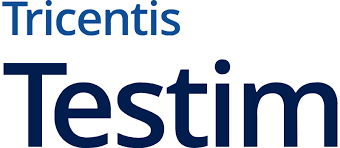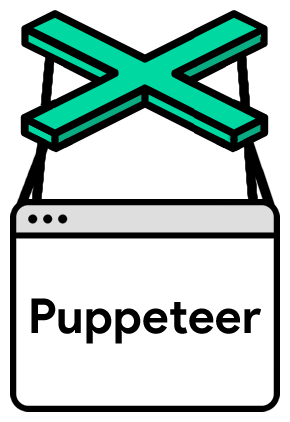Cypress has earned its spot as one of the most popular tools for end-to-end testing, but let’s be honest – it’s not perfect for every project. Maybe your tests are getting slow, or you need better parallelization, or you’re just tired of browser quirks eating up your day.
The good news? There are plenty of solid alternatives out there – tools that bring their own flavor of simplicity, speed, or cross-platform freedom. In this guide, we’ll look at the best Cypress alternatives worth trying in 2025, what they do better (and worse), and how to figure out which one actually fits your team.

1. AppFirst
AppFirst focuses on simplifying infrastructure setup so developers can spend more time on their applications instead of maintaining cloud configurations or deployment scripts. Rather than managing Terraform files, VPC setups, or internal frameworks, teams define what their app needs, and AppFirst handles the rest. It provides built-in monitoring, logging, and compliance tools that automatically fit into modern workflows, removing the need for manual DevOps management.
In a testing context, AppFirst helps teams standardize environments and deploy applications consistently across different cloud providers. This can support smoother integration with testing pipelines, especially when infrastructure reliability or configuration drift becomes a bottleneck. The platform offers flexibility for both SaaS and self-hosted deployments, giving teams control over how they operate without adding complexity.
נקודות עיקריות:
- Handles infrastructure provisioning automatically across major cloud providers
- Offers built-in logging, monitoring, and auditing features
- Centralized visibility for cost, security, and compliance
- Supports SaaS and self-hosted deployment options
- Removes the need for a dedicated infrastructure or DevOps team
Who it’s best for:
- Development teams that prefer focusing on application code instead of infrastructure setup
- Organizations working across multiple cloud platforms (AWS, Azure, GCP)
- Teams looking to reduce manual DevOps overhead in testing and deployment pipelines
- Companies that need consistent, compliant infrastructure without building internal tooling
פרטי קשר:
- אֲתַר אִינטֶרנֶט: www.appfirst.dev

2. TestCafe
TestCafe offers a straightforward approach to end-to-end web testing that runs directly in modern browsers without extra setup or plugins. It supports JavaScript and TypeScript and lets teams create readable tests quickly, either by writing code manually or using a recording interface. Because it runs tests in real browsers, TestCafe helps teams catch real-world issues earlier while keeping the setup process minimal. Its syntax is simple enough for beginners but still flexible for advanced workflows, including parallel test execution and CI/CD integration.
They provide cross-browser support that includes Chrome, Firefox, Safari, Edge, and Opera, as well as cloud options through services like BrowserStack and LambdaTest. TestCafe also includes tools for debugging and managing unstable tests, making it easier to pinpoint failures during continuous runs. Overall, it gives teams a practical way to automate browser testing without depending on WebDriver or complex configuration steps.
נקודות עיקריות:
- Runs tests in real browsers without external drivers
- Supports JavaScript and TypeScript test writing
- Integrates with common CI/CD solutions
- Allows parallel test execution for faster runs
- Includes built-in debugging and test stability tools
Who it’s best for:
- Teams looking for a lightweight testing framework with minimal setup
- Developers who prefer coding in JavaScript or TypeScript
- QA engineers who need reliable browser-based test automation
- Projects that require integration with multiple CI/CD environments
פרטי קשר:
- Website: testcafe.io
- E-mail: testcafeteam@devexpress.com
- Facebook: www.facebook.com/dxtestcafe
- Twitter: x.com/DXTestCafe

3. Testim
Testim uses AI-assisted automation to help teams create and maintain end-to-end tests for web, mobile, and Salesforce applications. Their system focuses on making test creation faster by identifying UI elements automatically and generating test flows based on user interactions. Teams can write or record tests, integrate them into existing CI/CD pipelines, and run them across different browsers or cloud grids. The approach aims to reduce the amount of manual setup that typically slows down test maintenance, especially in fast-moving environments.
They combine test authoring, execution, and management in a single platform that supports both codeless and code-based workflows. The use of AI in locator selection helps reduce test breakage when applications change, while built-in analytics and integrations with popular tools like Jira, GitHub, and BrowserStack make it easier to align testing with the development process. This makes Testim a practical choice for teams that want to automate complex test scenarios without maintaining large custom frameworks.
נקודות עיקריות:
- AI-driven test creation and maintenance for web, mobile, and Salesforce apps
- Smart locators that adjust to UI changes automatically
- Works with popular CI/CD and issue-tracking tools
- Supports both coded and codeless test authoring
- Cloud-based parallel testing and cross-browser coverage
Who it’s best for:
- Teams managing frequent UI updates or complex front-end applications
- Organizations testing across web, mobile, and Salesforce environments
- QA and DevOps groups looking to reduce manual test maintenance
- Development teams seeking tighter integration between testing and release workflows
פרטי קשר:
- Website: www.testim.io
- Facebook: www.facebook.com/testimdotio
- Twitter: x.com/testim_io
- LinkedIn: www.linkedin.com/company/testim-io
- Address: 5301 Southwest Pkwy. Building 2, Suite 200, Austin, Texas

4. Katalon
Katalon provides a test automation platform designed to support web, API, mobile, and desktop testing within one ecosystem. Their framework combines low-code tools with scripting options, giving teams flexibility to automate tests regardless of skill level. The platform integrates AI features that help with test creation, maintenance, and execution, aiming to simplify repetitive work and reduce dependency on traditional testing frameworks. It supports both individual testers and enterprise-scale QA operations, with built-in orchestration tools for managing large testing pipelines.
They focus on unifying different aspects of testing under one platform rather than relying on multiple disconnected tools. With components like Studio for test authoring, TestOps for management and analytics, and TestCloud for remote execution, teams can handle everything from local test creation to distributed runs in one place. Integration with CI/CD tools and version control systems allows Katalon to fit into existing workflows without major restructuring.
נקודות עיקריות:
- Supports testing across web, mobile, API, and desktop applications
- Combines low-code and full-code capabilities in one platform
- AI-assisted test authoring and maintenance
- Centralized test management and reporting with TestOps
- Parallel execution and remote runs via TestCloud
- Integrates with Jira, Jenkins, GitHub, and other CI/CD tools
Who it’s best for:
- QA teams looking for an all-in-one automation solution
- Organizations managing complex or large-scale testing environments
- Teams transitioning from manual to automated testing
- Developers and testers working within CI/CD-driven workflows
פרטי קשר:
- Website: katalon.com
- E-mail: business@katalon.com
- Facebook: www.facebook.com/KatalonPlatform
- Twitter: x.com/KatalonPlatform
- LinkedIn: www.linkedin.com/company/katalon
- Address: 1720 Peachtree Street NW, Suite 870, Atlanta, GA 30309

5. Puppeteer
Puppeteer is a Node.js library that lets developers automate browsers like Chrome and Firefox using a high-level API. It works by connecting directly to the browser through the DevTools Protocol, allowing control over navigation, interaction, screenshots, and testing without needing a visible interface. While it started as a tool for headless Chrome automation, it now supports multiple browsers and is often used for tasks such as UI testing, scraping, and performance measurement.
In testing workflows, Puppeteer offers developers direct programmatic control instead of relying on traditional UI test frameworks. This makes it useful for teams that prefer scripting browser interactions in JavaScript or TypeScript, especially when they need fine-grained control over page behavior or want to integrate testing into custom setups. Compared to tools like Cypress, Puppeteer leans more toward flexibility and scripting freedom rather than prebuilt testing structure.
נקודות עיקריות:
- JavaScript library for browser automation through DevTools Protocol
- Supports Chrome, Chromium, and Firefox
- Runs in headless mode by default
- Allows detailed control over page actions, network requests, and elements
- Can be used for testing, scraping, and performance monitoring
- Integrates easily with custom testing setups and CI environments
Who it’s best for:
- Developers comfortable writing JavaScript for browser automation
- Teams building custom or lightweight testing frameworks
- Projects that need headless browser interaction or page scraping
- QA engineers who prefer direct control over browser behavior
פרטי קשר:
- Website: pptr.dev
- Twitter: x.com/chromedevtools
6. Selenium
Selenium has been around long enough to become a foundation for many modern testing tools, including some that now compete with it. It’s an open-source framework built for browser automation, allowing teams to create end-to-end tests that simulate real user behavior across different browsers and operating systems. Its main strength lies in flexibility: users can write tests in several programming languages and run them on multiple environments, whether locally or through cloud-based grids.
Unlike Cypress, which focuses on a streamlined developer experience, Selenium gives teams more granular control over how tests run and where they run. It’s often used as part of a broader automation setup, especially in larger organizations that rely on distributed test execution or need to test legacy systems alongside modern web apps. Selenium doesn’t abstract away complexity as much as newer frameworks, but that’s also what makes it adaptable to almost any setup.
נקודות עיקריות:
- Open-source browser automation framework
- Supports multiple programming languages such as Java, Python, and JavaScript
- Works across major browsers and operating systems
- Includes WebDriver, IDE, and Grid components for different testing needs
- Allows distributed test execution across various environments
- Integrates with many CI/CD tools and cloud testing platforms
Who it’s best for:
- Teams needing flexibility to run tests across multiple browsers or systems
- Organizations maintaining both modern and legacy web applications
- Developers comfortable writing tests in code rather than using visual tools
- QA engineers setting up large-scale or cross-browser testing environments
פרטי קשר:
- Website: www.selenium.dev
- E-mail: selenium@sfconservancy.org
- Twitter: x.com/SeleniumHQ

7. Keploy
Keploy is an open-source testing platform that focuses on generating unit, integration, and API tests automatically. They use AI to record and replay API calls, helping developers convert real interactions into test cases and mocks. Instead of writing tests manually, teams can attach Keploy to their running applications, capture network traffic, and generate meaningful test data that fits into their existing workflows. The platform integrates with popular CI/CD tools and testing frameworks, offering flexibility for different setups without the need for complex configurations.
They aim to simplify test maintenance and improve coverage by reducing flaky or redundant tests. The system uses eBPF technology to capture behavior from running applications and replicate those scenarios consistently. Keploy’s approach allows teams to test complex distributed systems and APIs in a more practical way, especially when working with microservices or environments where setting up traditional tests can be time-consuming.
נקודות עיקריות:
- AI-generated unit, integration, and API tests based on real traffic
- Record-and-replay system using eBPF for accurate mocks and stubs
- Integrates with popular CI/CD tools and frameworks like JUnit, PyTest, and Jest
- Automated test deduplication to remove redundant or overlapping tests
- Centralized reporting and GitHub PR test agent for consistent test coverage
- Works across multiple programming languages and environments
Who it’s best for:
- Development teams looking to automate test generation and reduce manual effort
- Organizations working with microservices or distributed systems
- QA teams seeking higher test coverage without expanding test maintenance overhead
- Teams that need consistent test execution within CI/CD pipelines
פרטי קשר:
- Website: keploy.io
- Twitter: x.com/keploy
- LinkedIn: www.linkedin.com/company/keploy

8. BrowserStack
BrowserStack is a cloud-based testing platform that allows teams to test web and mobile applications across a wide range of browsers, operating systems, and real devices. They provide both manual and automated testing environments without requiring local infrastructure, which makes it easier for distributed teams to maintain consistent test results. Their setup supports popular frameworks like Selenium, Cypress, and Playwright, letting developers run automated tests directly in their CI/CD pipelines and get real-time results.
They focus on enabling realistic testing conditions, helping teams catch issues that might only appear on specific browsers or devices. Beyond browser and app testing, they also provide tools for visual regression, accessibility checks, and test management. The platform integrates smoothly with common developer tools such as Jira, Jenkins, and Slack, keeping test feedback connected with development workflows. BrowserStack’s flexibility makes it suitable for both small projects and enterprise-level automation pipelines.
נקודות עיקריות:
- Cross-browser and cross-device testing on real infrastructure
- Supports manual and automated testing for web and mobile apps
- Integrates with popular CI/CD tools and frameworks like Selenium, Cypress, and Playwright
- Includes visual regression and accessibility testing tools
- Offers centralized test management and reporting features
- Provides real-time feedback and bug reproduction capabilities
Who it’s best for:
- Teams needing reliable cross-browser and mobile testing environments
- Developers running automated tests directly in CI/CD pipelines
- QA engineers looking for visual and accessibility testing in one platform
- Organizations aiming to reduce local infrastructure for testing
פרטי קשר:
- Website: www.browserstack.com
- E-mail: support@browserstack.com
- Facebook: www.facebook.com/pages/BrowserStack/305988982776051
- Twitter: x.com/browserstack
- LinkedIn: www.linkedin.com/company/browserstack
- Instagram: www.instagram.com/browserstack
- Phone: +1 (409) 230-0346

9. LambdaTest
LambdaTest provides a cloud-based platform that helps teams test web and mobile applications across different browsers, devices, and operating systems. They combine manual and automated testing options in one place, allowing developers and QA engineers to validate their applications in real environments without maintaining local setups. Their system supports major testing frameworks like Selenium, Cypress, Playwright, and Appium, giving teams flexibility in how they run and scale their tests. LambdaTest also includes features for visual and accessibility testing, helping identify layout or compliance issues early in the process.
They have been expanding their platform with AI-driven features, such as test orchestration through HyperExecute and intelligent test authoring using natural language. This approach aims to simplify end-to-end test creation and maintenance while reducing execution time. Their integrations with CI/CD tools, issue trackers, and collaboration platforms make it easier to manage testing directly within existing workflows. The platform’s flexibility and focus on real-device coverage make it suitable for projects that need both speed and reliability across multiple environments.
נקודות עיקריות:
- Cross-browser and real-device testing for web and mobile applications
- Compatible with popular automation frameworks like Selenium, Cypress, and Playwright
- AI-supported testing with features like KaneAI and HyperExecute
- Visual and accessibility testing capabilities included
- Wide range of third-party integrations for CI/CD and project management tools
- Cloud-based environment with real-time test execution and analytics
Who it’s best for:
- Teams needing consistent browser and device coverage without local setup
- Developers looking to integrate automation testing into existing CI/CD pipelines
- QA professionals aiming to improve test speed and stability through AI features
- Organizations maintaining complex web or mobile applications across multiple environments
פרטי קשר:
- Website: www.lambdatest.com
- E-mail: support@lambdatest.com
- Facebook: www.facebook.com/lambdatest
- Twitter: x.com/Lambdatesting
- LinkedIn: www.linkedin.com/company/lambdatest
- Address: 1 Sutter Street, Suite 500 San Francisco CA 94104
- Phone: +1-(866)-430-7087

10. Playwright
Playwright is a testing framework built to handle end-to-end testing across multiple browsers and platforms. Developed by Microsoft, it supports Chromium, Firefox, and WebKit, allowing developers to test how their applications behave in different environments without switching tools. They focus on reducing test flakiness through automatic waiting, web-first assertions, and full isolation between browser contexts. This design helps teams test dynamic web applications that rely on modern front-end frameworks and asynchronous actions. Playwright can be used in various programming languages, including JavaScript, Python, Java, and .NET, which makes it adaptable to different tech stacks.
They also offer detailed debugging and reporting features, such as execution tracing, video recording, and the Playwright Inspector for step-by-step analysis. Built-in tools for code generation make it easier to create test scripts by recording user actions, which helps shorten setup time. Since it aligns closely with how real browsers work, Playwright can handle complex scenarios involving multiple tabs, user sessions, or shadow DOM elements. It gives teams a way to test full user journeys across browsers with minimal manual setup while maintaining a consistent approach to test structure and performance.
נקודות עיקריות:
- Supports Chromium, Firefox, and WebKit for cross-browser testing
- Works across major platforms: Windows, macOS, and Linux
- Offers APIs for multiple languages including JavaScript, Python, Java, and .NET
- Automatically waits for elements to be ready before actions
- Provides full test isolation with separate browser contexts
- Includes tracing, screenshots, and video capture for debugging
- Built-in tools for recording and inspecting tests
Who it’s best for:
- Teams building complex web applications needing cross-browser validation
- Developers who want to write tests in different programming languages
- QA teams focused on reducing test flakiness and debugging time
- Projects that need full control over browser behavior and real user interactions
פרטי קשר:
- Website: playwright.dev
- Twitter: x.com/playwrightweb
- LinkedIn: www.linkedin.com/company/playwrightweb

11. Rainforest QA
Rainforest QA focuses on no-code, AI-assisted testing for web applications. Instead of writing scripts, teams can create and manage automated tests using a visual editor. The platform uses AI to analyze user interfaces, generate regression tests, and self-heal when UI elements change. This setup allows teams to maintain a consistent testing workflow without spending time on script maintenance or framework setup. Rainforest QA integrates with CI/CD pipelines and supports test runs in parallel, helping teams identify issues before deployment with minimal manual effort.
They approach testing as a collaborative process where technical and non-technical members can participate. By combining test creation, execution, and debugging in one interface, teams can quickly trace test failures through logs and video replays. The tool also fits into existing workflows, offering integrations with GitHub, Slack, and other development tools. Overall, it provides an accessible path for teams that want automation but don’t want to commit to writing and maintaining test code.
נקודות עיקריות:
- No-code platform for creating and maintaining automated tests
- AI generates and updates tests based on UI changes
- Parallel execution for faster test cycles
- Visual test editor and detailed debugging tools
- Integrations with GitHub, Slack, and CI/CD systems
Who it’s best for:
- Teams looking for automated testing without writing scripts
- Non-technical users who need to participate in QA workflows
- Projects that frequently update their UI and need self-healing tests
- Companies aiming to simplify regression testing within existing pipelines
פרטי קשר:
- Website: www.rainforestqa.com
12. Appium
Appium is an open-source automation framework built for testing applications across multiple platforms. It supports UI testing for mobile apps on Android, iOS, and other operating systems, as well as for browsers, desktop applications, and even smart TVs. What makes Appium stand out in multi-platform testing is that it uses the same API across all supported environments, so teams don’t have to write separate tests for different devices or operating systems. It follows a client-server architecture and integrates easily with existing testing stacks, allowing developers to run tests locally or in distributed environments.
They focus heavily on flexibility and community-driven development. Because it’s open source, Appium can be extended with plugins, custom drivers, and additional tools to match unique testing needs. It works with most popular programming languages, which makes it easier for developers to write and maintain automated tests using their preferred stack. This versatility has made Appium a common choice for teams that want to manage mobile and web testing under one framework without being tied to a single ecosystem.
נקודות עיקריות:
- Open-source framework for automating tests across mobile, web, and desktop apps
- Uses a single API for multiple platforms and devices
- Supports testing in various languages, including Java, Python, and JavaScript
- Compatible with Android, iOS, macOS, Windows, and other environments
- Can be extended with plugins and third-party integrations
Who it’s best for:
- Teams managing both mobile and web application testing
- Developers who prefer open-source tools with strong community support
- Projects requiring flexibility in language and platform support
- Organizations testing across different device types and operating systems
פרטי קשר:
- Website: appium.io
- Twitter: x.com/AppiumDevs

13. Nightwatch
Nightwatch is a testing framework that supports end-to-end, integration, and unit testing for both web and mobile applications. It’s built on the W3C WebDriver standard, which means it runs tests in real browsers rather than simulated environments, giving results that closely mirror how users actually experience a product. They allow teams to test everything from simple UI interactions to more complex gestures and multi-browser setups, all within one environment. Nightwatch can be run locally or scaled using cloud-based testing grids, and it supports both web and native mobile app testing without requiring a major shift in how teams structure their tests.
They’ve also placed a strong focus on debugging and developer usability. The framework includes features like built-in HTML reports, DOM history tracking, and a REPL interface for real-time debugging. With integrations for popular tools such as Mocha, Cucumber, and Jest, it fits naturally into most development workflows. Nightwatch continues to evolve as an open-source project, maintained with support from BrowserStack and its community contributors.
נקודות עיקריות:
- End-to-end, integration, and unit testing for web and mobile apps
- Real browser testing following W3C standards
- Parallel and distributed testing capabilities for scalability
- Built-in debugging tools like HTML reporting and DOM tracking
- Integrations with Mocha, Cucumber, Jest, and other common frameworks
Who it’s best for:
- Teams looking for a single framework to test web and mobile applications
- Developers who prefer real-browser testing over simulated environments
- Projects that require parallel execution or large-scale test runs
- Teams using JavaScript-based workflows with existing test tool integrations
פרטי קשר:
- Website: nightwatchjs.org
- Twitter: x.com/nightwatchjs

14. Tricentis Tosca
Tricentis Tosca is one of those tools that big companies tend to swear by – and for good reason. It takes a lot of the pain out of testing by letting you build and manage tests visually instead of writing code line by line. Think of it like snapping together building blocks rather than typing out scripts. It’s cleaner, faster, and honestly just easier to maintain when your apps keep changing. It works across pretty much everything – web, mobile, desktop – and it slides right into most DevOps setups without much fuss. If your team’s dealing with multiple systems or huge testing environments, that alone can save a ton of time and stress.
One of the cooler things Tosca’s been doing lately is leaning into AI. It can now read natural language prompts, generate test cases automatically, and even update them when your software changes. It’s almost like having a quiet teammate who takes care of the repetitive stuff while you focus on the bigger picture. You can run Tosca in the cloud or keep it on-prem if you prefer – whichever fits your setup better.
נקודות עיקריות:
- Model-based test automation that reduces manual scripting
- AI features for automated test creation and maintenance
- Supports a wide range of technologies and enterprise applications
- Integration with DevOps pipelines and continuous testing tools
- Available for both cloud and on-premise setups
Who it’s best for:
- Large enterprises managing complex applications across multiple platforms
- Teams looking for codeless automation with AI-assisted capabilities
- Organizations adopting Agile or DevOps workflows
- QA teams aiming to standardize testing across web, mobile, and legacy systems
פרטי קשר:
- Website: www.tricentis.com
- E-mail: office@tricentis.com
- Facebook: www.facebook.com/TRICENTIS
- Twitter: x.com/Tricentis
- Address: 5301 Southwest Parkway Building 2, Suite #200 Austin, TX 78735
- Phone: +1 737-497-9993
מַסְקָנָה
So, here’s the thing – Cypress isn’t the only player in town anymore. The testing world has really opened up over the past few years. It’s not just about what’s trendy or what everyone else is using; teams are getting smarter about picking tools that actually fit their setup, their workflow, and their comfort level.
Some people still swear by Selenium because it’s rock-solid and familiar. Others lean toward Playwright for its modern features, or something like Tosca if they’re deep into enterprise systems. And honestly? That’s kind of the point – there’s no single “best” option anymore.
Most teams end up blending things anyway. Maybe you use a lightweight open-source tool for quick front-end checks, and something heavier for your big integration tests. What really matters is how well it all fits into the rhythm of your development cycle – not just the feature list.
So instead of hunting for the “perfect Cypress alternative,” it’s probably smarter to think about balance: what combination of tools gives you the right mix of speed, coverage, and sanity for your setup. Because at the end of the day, the best testing framework is the one that actually makes your life easier.


